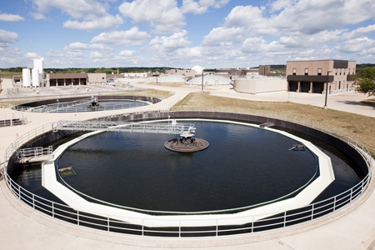Upgrades In Water Infrastructure Point To Lucrative Contracting Opportunities

In February of 2024, additional federal funding was announced for water and wastewater infrastructure projects. The funding is part of the government’s effort to ensure reliable water resources and safe drinking water throughout America. Almost $6 billion is now available for every state and territory for water projects. As a result, contracting opportunities for private sector collaborations are being announced weekly.
The Regional Wastewater Treatment Plant in Sioux City, Iowa, is operating at capacity, but its aging infrastructure cannot accommodate any growth and certainly not the region’s anticipated growth. Approximately $465 million is needed to provide upgrades, officials say. City leaders will oversee a project to rebuild the plant on the current site. The work will be done in phases. The first phase, with a cost estimate of $270 million, is currently being designed, and that effort will consume the rest of 2024. The city will use a Construction-Manager-at-Risk (CMAR) delivery model, and construction is slated for 2025. Phase 1 upgrades will include rebuilding the existing aeration basins, a primary pump station and new primary clarifiers.
The second phase, with an estimated $170 million cost projection, will include new additional aeration basins and a new administration and lab building. A third phase could be added, depending on growth, to expand capacity even more. If that happens, the expansion would carry a $125 million cost estimate.
The Cape Fear Public Utility Authority has received $35 million to replace and expand the region’s aging Southside Wastewater Treatment Plant in Wilmington, North Carolina. A project cost projection has been tagged at $239 million. The project will include a new activated sludge treatment process to treat municipal and industrial wastewater. The plant will be designed to distribute 16 million gallons of water per day, which is 30% more than the 51-year-old existing treatment plant’s current capacity. It will also incorporate more modern treatment technology. Engineering and design for Wilmington’s new wastewater treatment plant is underway, and construction expected to begin either in late 2024 or early 2025.
After receiving a $2 million federal grant, city officials in Bartlesville, Oklahoma, have launched the engineering phase of a Chickasaw Wastewater Treatment Plant replacement and expansion project. Estimated to cost $65 million, this effort has been required by the Oklahoma Department of Environmental Quality because of the need to increase the plant’s capacity and implement new technology. The remainder of the project’s total cost will be funded by the city. When completed, the new facility will increase daily water distribution capacity from 7 million to 8.2 million gallons. The project will also include upgraded equipment, new technology and other water treatment upgrades. Construction will begin after the engineering phase is completed.
City leaders at the city of Tomball in Texas have announced plans for a new water plant. The $19.5 million project is listed as a high priority because of the city’s growth and demands for greater water capacity. The project will be designed for a plant with a pump station capable of providing 3,000 gallons per minute and a ground tank with storage capacity of 1 million gallons of water. The pump station will be sized to meet 70% of projected 2042 peak hourly demand, and the new ground storage tank will be designed to meet 8 hours of maximum day demand in 2042.
The project is currently in the design phase, and construction is slated to begin in 2025 and conclude in 2026.
A new wastewater treatment plant is on the horizon for the city of Lake Oswego, Oregon. The city’s current facility, the Tryon Creek Wastewater Treatment Plant, is struggling to meet water quality requirements set by the Oregon Department of Environmental Quality because the plant is old and in poor condition. The effort to deliver a state-of-the-art wastewater treatment facility has been through preliminary design, permitting and projected cost estimations. The project has been tagged with a cost estimate of between $592 million and $622 million, and city leaders are preparing to release solicitations later this year. The solicitation document will express a preference to use public funding for the project but to select a private sector partner able to complete the final design, construct the facility and then provide operational oversight.
Officials at the Riverbend Water Resources District in Texas have announced plans for major water infrastructure improvements that include the construction of a water treatment plant. This large project will be designed to improve water supply for communities in Northeast Texas through a series of developments. Along with construction of the plant, other key elements of the project will include dredging a channel in Wright Patman Lake to secure adequate depth for water intake, constructing an intake structure on the lake’s shoreline with a gravity-fed pipeline leading to a pump station and installing a raw water transmission main. The project, with an estimated cost of $200 million, is on track for construction to begin in 2025.
Water infrastructure reform will be responsible for billions of contracting opportunities between 2024 and 2026, and likely beyond that as well.
 As President and CEO of Strategic Partnerships, Inc., Mary Scott Nabers has decades of experience working in the public-private sector. A well-recognized expert in the P3 and government contracting fields, she is often asked to share her industry insights with top publications and through professional speaking engagements.
As President and CEO of Strategic Partnerships, Inc., Mary Scott Nabers has decades of experience working in the public-private sector. A well-recognized expert in the P3 and government contracting fields, she is often asked to share her industry insights with top publications and through professional speaking engagements.
